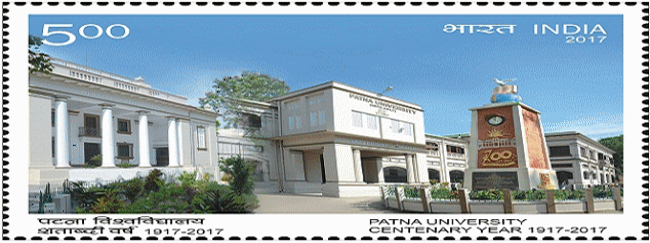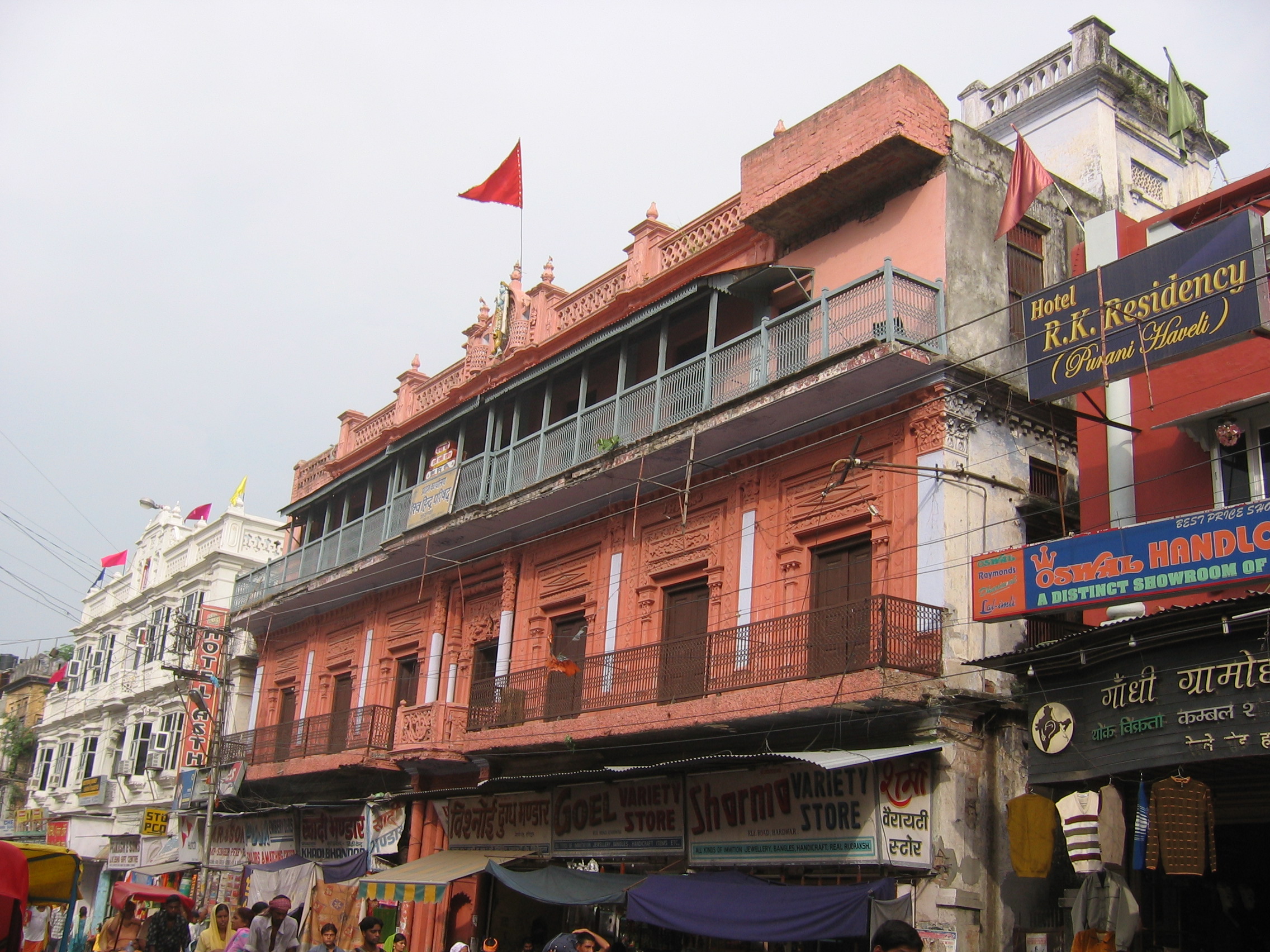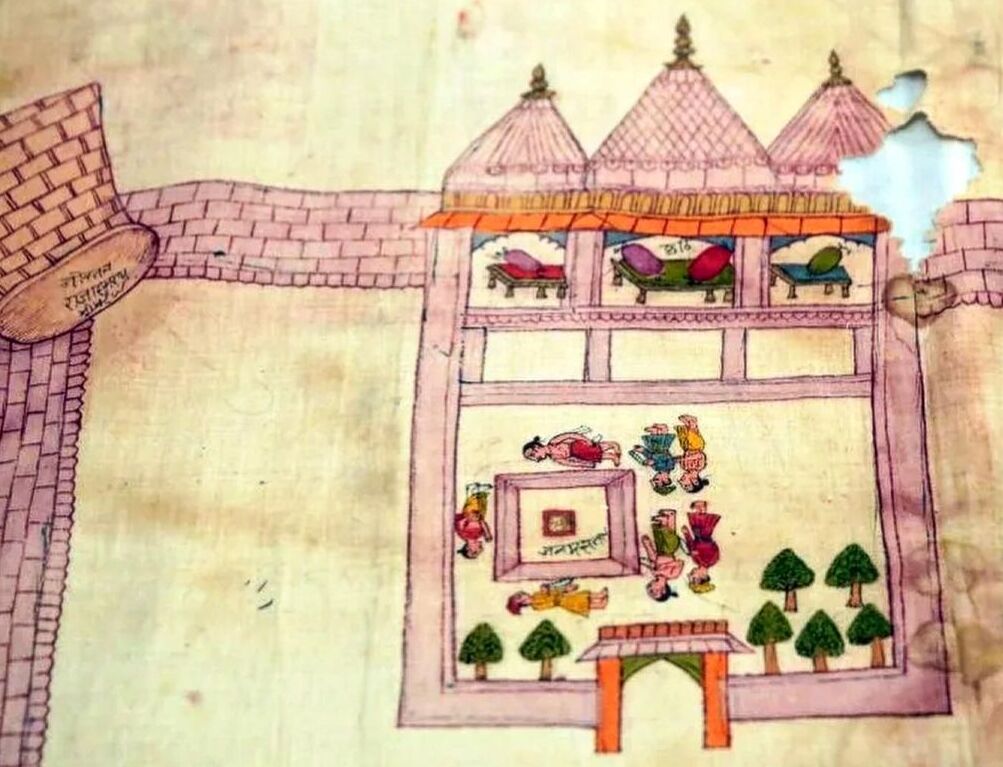|
Bindeshwari Prasad Sinha
Bindeshwari Prasad Sinha (1919–2002) was an Indian archaeologist and historian specialising in ancient Indian history. Sinha was a professor and head of the Department of History and Archaeology at Patna University. He was the founder of Bihar state's Directorate of Archaeology and Museums. He was also the director of the K. P. Jayaswal Research Institute in Patna. B. P. Sinha was born in Bihar Sharif in 1919. He obtained an M.A. degree from the Patna University. He obtained a Ph.D. from SOAS, University of London in 1948. His guide was Lionel Barnett, and his thesis was on the topic ''Decline of the Kingdom of Magadh''. After returning to India, he taught at the Patna College, and later Patna University. He became the university's Head of department in 1958, and a professor in 1959. He also taught as a visiting professor in Bulgaria, the United States and Yugoslavia. Sinha is known for having carried out the first excavations at Vikramashila, the site of an ancient Buddhis ... [...More Info...] [...Related Items...] OR: [Wikipedia] [Google] [Baidu] |
Patna University
Patna University is a public state university in Patna, Bihar, India. It was established on 1 October 1917 during the British Raj. It is the first university in Bihar and the seventh oldest university in the Indian subcontinent in the modern era. It offers different undergraduate and postgraduate degree level courses. History Patna University was established by an Act of the Imperial Legislative Council passed in September 1917. It started the journey in October 1917 as an affiliating and examining body when JG Jennings took charge of this university as the first vice-chancellor. In the modern era of India, it is one of the oldest universities in this region. Later in 1919, the governing bodies of the university—the Senate and the Syndicate—were formed. The iconic Wheeler Senate House of the Patna University was built in 1926 for which Raja Devaki Nandan Prasad of Munger donated the money. When the university was first established it had jurisdiction over all higher educa ... [...More Info...] [...Related Items...] OR: [Wikipedia] [Google] [Baidu] |
Vishva Hindu Parishad
Vishva Hindu Parishad (VHP) () is an Indian Right-wing politics, right-wing Hindu organisation based on Hindutva, Hindu nationalism. The VHP was founded in 1964 by M. S. Golwalkar and S. S. Apte in collaboration with Chinmayananda Saraswati, Swami Chinmayananda. Its stated objective is "to organise, consolidate the Hindu society and to serve and protect the Hindu Dharma". It was established to construct and renovate Hindu temples, and deal with matters of Cattle slaughter in India, cow slaughter and religious conversion. The VHP is a member of the Sangh Parivar group, the family of Hindu nationalism, Hindu nationalist organisations led by the Rashtriya Swayamsevak Sangh, RSS. The VHP has been criticised for contributing to violence against Muslims in India, most notably for its role in the demolition of the Babri Masjid in 1992 over the Ayodhya dispute. History The VHP was founded in 1964 by RSS leaders M. S. Golwalkar and S. S. Apte in collaboration with the Hindu spir ... [...More Info...] [...Related Items...] OR: [Wikipedia] [Google] [Baidu] |
Scientists From Bihar
A scientist is a person who researches to advance knowledge in an area of the natural sciences. In classical antiquity, there was no real ancient analog of a modern scientist. Instead, philosophers engaged in the philosophical study of nature called natural philosophy, a precursor of natural science. Though Thales ( 624–545 BC) was arguably the first scientist for describing how cosmic events may be seen as natural, not necessarily caused by gods,Frank N. Magill''The Ancient World: Dictionary of World Biography'', Volume 1 Routledge, 2003 it was not until the 19th century in science, 19th century that the term ''scientist'' came into regular use after it was coined by the theologian, philosopher, and historian of science William Whewell in 1833. History The roles of "scientists", and their predecessors before the emergence of modern scientific disciplines, have evolved considerably over time. Scientists of different eras (and before them, natural philosophe ... [...More Info...] [...Related Items...] OR: [Wikipedia] [Google] [Baidu] |
Historians Of India
A historian is a person who studies and writes about the past and is regarded as an authority on it. Historians are concerned with the continuous, methodical narrative and research of past events as relating to the human species; as well as the study of all history in time. Some historians are recognized by publications or training and experience.Herman, A. M. (1998). Occupational outlook handbook: 1998–99 edition. Indianapolis: JIST Works. Page 525. "Historian" became a professional occupation in the late nineteenth century as research universities were emerging in Germany and elsewhere. Objectivity Among historians Ancient historians In the 19th century, scholars used to study ancient Greek and Roman historians to see how generally reliable they were. In recent decades, however, scholars have focused more on the constructions, genres, and meanings that ancient historians sought to convey to their audiences. History is always written with contemporary concerns and ancient hist ... [...More Info...] [...Related Items...] OR: [Wikipedia] [Google] [Baidu] |
2002 Deaths
This is a list of lists of deaths of notable people, organized by year. New deaths articles are added to their respective month (e.g., Deaths in ) and then linked below. 2025 2024 2023 2022 2021 2020 2019 2018 2017 2016 2015 2014 2013 2012 2011 2010 2009 2008 2007 2006 2005 2004 2003 2002 2001 2000 1999 1998 1997 1996 1995 1994 1993 1992 1991 1990 1989 1988 1987 1986 Earlier years ''Deaths in years earlier than this can usually be found in the main articles of the years.'' See also * Lists of deaths by day * Deaths by year (category) {{DEFAULTSORT:deaths by year ... [...More Info...] [...Related Items...] OR: [Wikipedia] [Google] [Baidu] |
1919 Births
Events January * January 1 ** The Czechoslovak Legions occupy much of the self-proclaimed "free city" of Bratislava, Pressburg (later Bratislava), enforcing its incorporation into the new republic of Czechoslovakia. ** HMY Iolaire, HMY ''Iolaire'' sinks off the coast of the Hebrides; 201 people, mostly servicemen returning home to Lewis and Harris, are killed. * January 2–January 22, 22 – Russian Civil War: The Red Army's Caspian-Caucasian Front begins the Northern Caucasus Operation (1918–1919), Northern Caucasus Operation against the White Army, but fails to make progress. * January 3 – The Faisal–Weizmann Agreement is signed by Faisal I of Iraq, Emir Faisal (representing the Arab Kingdom of Hejaz) and Zionism, Zionist leader Chaim Weizmann, for Arab–Jewish cooperation in the development of a Jewish homeland in Palestine (region), Palestine, and an Arab nation in a large part of the Middle East. * January 5 – In Germany: ** Spartacist uprising in ... [...More Info...] [...Related Items...] OR: [Wikipedia] [Google] [Baidu] |
Ram Janmabhoomi
Ram Janmabhoomi () is the site that, according to Hindu religious beliefs, is the birthplace of Rama, the seventh avatar of the Hindu deity Vishnu. The Ramayana states that the location of Rama's birthplace is on the banks of the Sarayu river in a city called "Ayodhya". Modern-day Ayodhya is in the north Indian state of Uttar Pradesh. It is contested whether the Ayodhya mentioned in the Ramayana is the same as the modern city. Some Hindus claim that the exact site of Rama's birthplace is within the grounds where the Babri Masjid once stood in the present-day Ayodhya, with this belief extending back to at least 1822. It has been suggested that a temple to Rama formerly existed at the same site as the Babri Masjid until it was replaced by the mosque, an idea supported by a court-ordered report of the Archaeological Survey of India following archaeological excavations around the ruins of the mosque, though the existence of this temple and the conclusions of the report are dispu ... [...More Info...] [...Related Items...] OR: [Wikipedia] [Google] [Baidu] |
Ayodhya Dispute
The Ayodhya dispute is a political, historical, and socio-religious debate in India, centred on a plot of land in the city of Ayodhya, Uttar Pradesh. The issues revolve around the control of a site regarded since at least the 18th century among many Hindus to be the birthplace of their deity Rama, the history and location of the Babri Masjid at the site, and whether a previous Hindu temple was demolished or modified to create the mosque. The site of the Babri Masjid has been claimed to be the birthplace of Rama since at least 1822. Hafizullah, a superintendent at the Faizabad court submitted a report to the court in 1822 in which he claimed, "The mosque founded by emperor Babur is situated at the birth-place of Ram." In 1855 local Muslims became convinced that the nearby Hanuman Garhi Temple was built over the site of a former mosque, and became resolved to demolish the temple, resulting in violent clashes leading to the deaths of many Muslims. In 1857, a '' chabutra'' (plat ... [...More Info...] [...Related Items...] OR: [Wikipedia] [Google] [Baidu] |
Babri Masjid Action Committee
The Babri Masjid (ISO: Bābarī Masjida; meaning ''Mosque of Babur'') was a mosque located in Ayodhya, in the state of Uttar Pradesh, India. It was claimed that the mosque was built upon the site of Ram Janmabhoomi, the legendary birthplace of Rama, a principal deity of Hinduism. The Ayodhya dispute has been a disputed focal point between the Hindu and Muslim communities since the 19th century. According to the mosque's inscriptions, it was built in by Mir Baqi, a commander of the Mughal emperor Babur. Before the 1940s, the masjid was officially known as "Masjid-i-Janmasthan" ("the mosque of the birthplace"). The mosque was attacked and demolished by a Hindu nationalist mob in 1992, which ignited communal violence across the Indian subcontinent. The mosque was located on a hill known as Ramkot ("Rama's fort"). According to Hindu nationalists, Baqi destroyed a pre-existing temple of Rama at the site. The existence of this temple is a matter of controversy. The Archaeologic ... [...More Info...] [...Related Items...] OR: [Wikipedia] [Google] [Baidu] |
Chirand
Chirand is an archaeological site in the Saran district of Bihar, India, situated on the northern bank of the Ganga River. Evidences of wheat were found. It has a large pre-historic mound which is known for its continuous archaeological record from the Neolithic age (about 2500–1345 BC) to the reign of the Pal dynasty who ruled during the pre-medieval period. The excavations in Chirand have revealed stratified Neolithic, Chalcolithic, and Iron Age settlements, and transitions in human habitation patterns dating from 2500 BC to 30 AD. The river Ghaghara joins Ganga a short distance away from the village, near Revelganj. The Sone River also joins Ganga about a few kilometres away from Chirand. About to the north of the mound there is a dry river bed which is inferred as one of the meandering dry loops of the Gandaki River. Thus, there are four rivers in the vicinity of Chirand. The village has undergone erosion due to which the mound abutting the Ganga River bank is expo ... [...More Info...] [...Related Items...] OR: [Wikipedia] [Google] [Baidu] |
Bihar
Bihar ( ) is a states and union territories of India, state in Eastern India. It is the list of states and union territories of India by population, second largest state by population, the List of states and union territories of India by area, 12th largest by area, and the List of Indian states and union territories by GDP, 14th largest by GDP in 2024. Bihar borders Uttar Pradesh to its west, Nepal to the north, the northern part of West Bengal to the east, and Jharkhand to the south. Bihar is split by the river Ganges, which flows from west to east. On 15 November 2000, a large chunk of southern Bihar was ceded to form the new state of Jharkhand. Around 11.27% of Bihar's population live in urban areas as per a 2020 report. Additionally, almost 58% of Bihari people, Biharis are below the age of 25, giving Bihar the highest proportion of young people of any Indian state. The official language is Hindi, which shares official status alongside that of Urdu. The main native languag ... [...More Info...] [...Related Items...] OR: [Wikipedia] [Google] [Baidu] |







